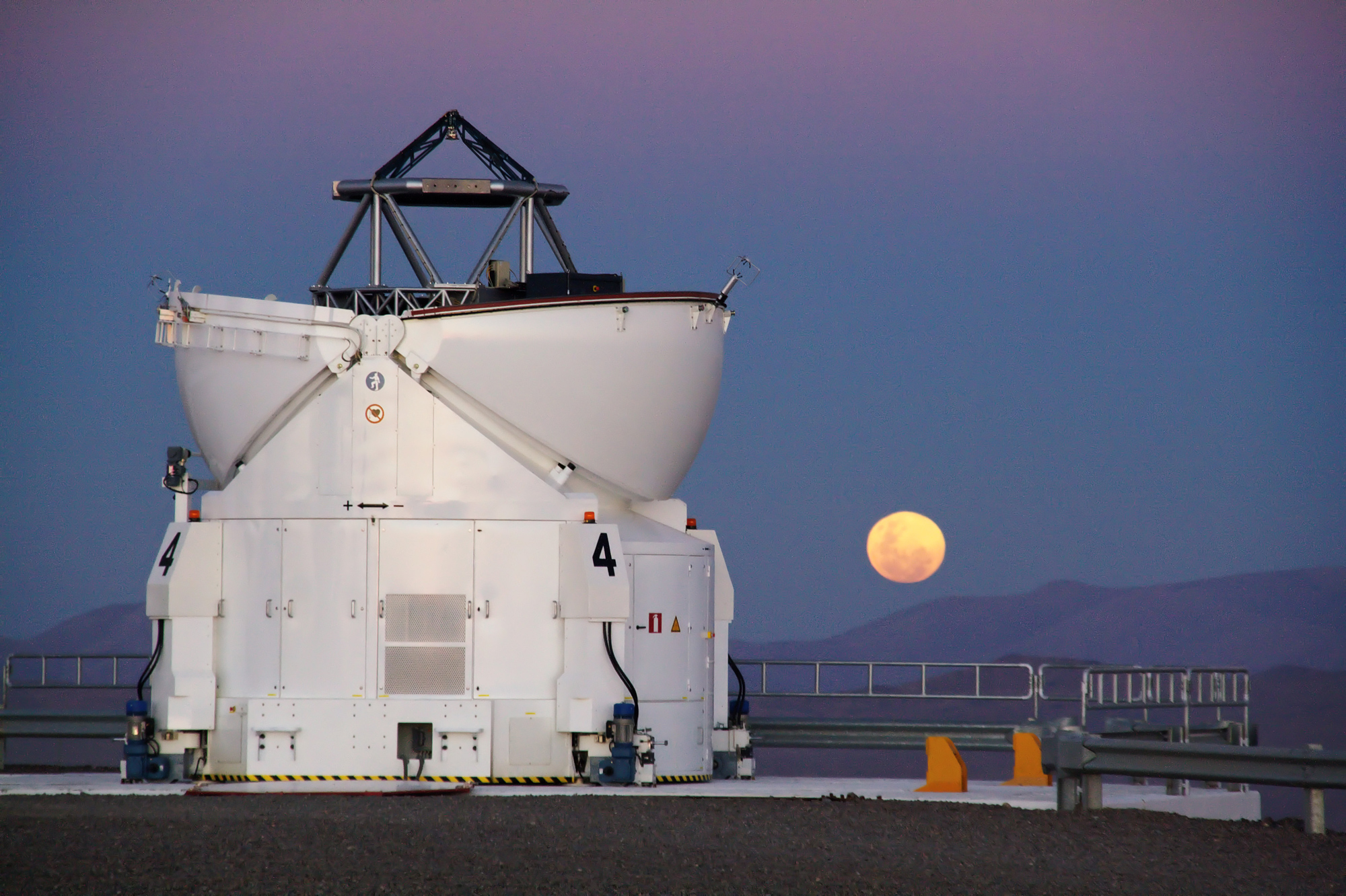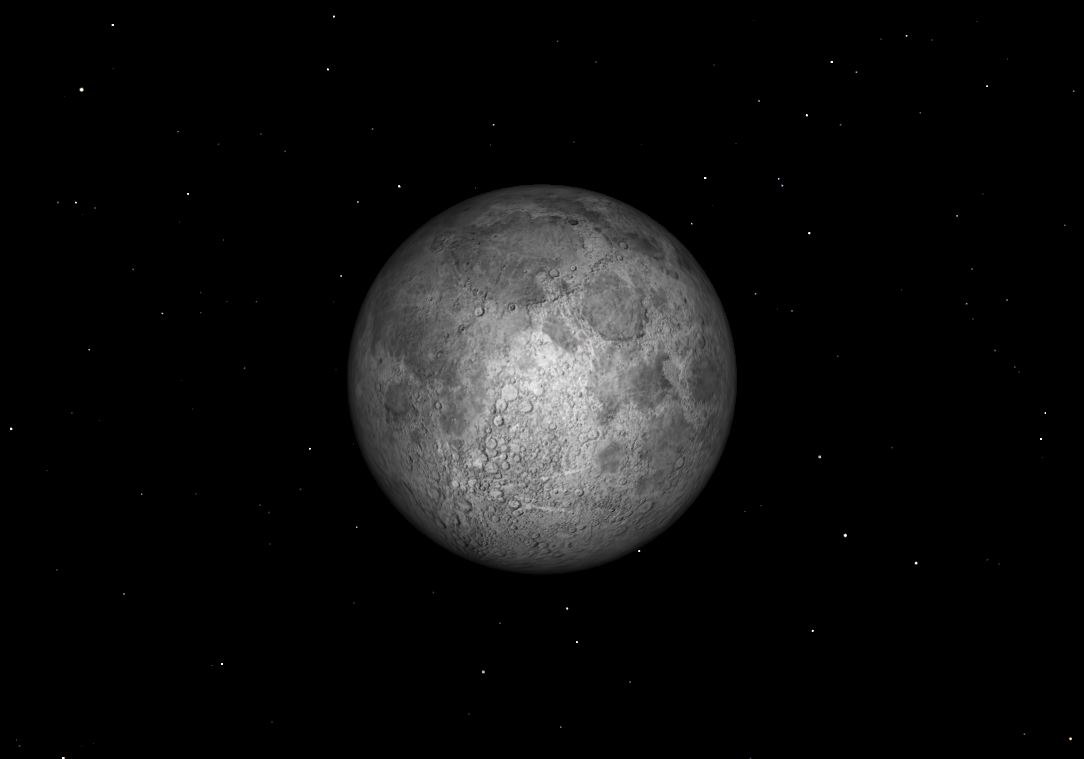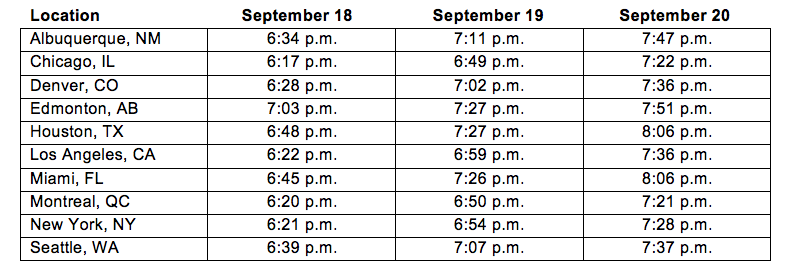
This Thursday's full moon carries the title of "Harvest Moon" for those living in the Northern Hemisphere. But what gives the special moon its name?
The moon officially turns full when it reaches the spot in the sky opposite (180 degrees) from the sun. That moment will occur on Thursday (Sept. 19) at 7:13 a.m. EDT (1113 GMT).
Thursday's full moon is the one nearest to the September equinox this year, making it the Harvest Moon by the usual definition. Other definitions of the Harvest Moon, according to Guy Ottewell's Astronomical Calendar 2013, are the full moon on or after the date of the equinox, or the full moon in October. [The Moon Revealed: 10 Surprising Lunar Facts]
Although we associate the Harvest Moon with autumn, this year's version is actually the last full moon of the summer season. In fact, it's this summer's fourth full moon, an oddity of sorts since most of the time there are only three full moons per season.
On average, an October Harvest Moon happens once about every four years, although this figure can be deceptive. The last October Harvest Moon was in 2009, but the next won't occur until 2017. Conversely, after 2017, we need only wait three years (2020) for the next October Harvest Moon.

Many think that the Harvest Moon remains in the night sky longer than any of the other full moons we see during the year, but that is not so. The Harvest Moon's claim to fame is that instead of rising its normal average of 50 minutes later each day, it rises only a little later each night, providing farmers with extra moonlight to reap their crops.
This unusually small daily lag in the time of moonrise occurs because the moon is traveling along the part of the ecliptic (Aquarius and Pisces) that makes the smallest angle with the eastern horizon as seen from northern latitudes.
Get the Space.com Newsletter
Breaking space news, the latest updates on rocket launches, skywatching events and more!
The local moonrise times for September 18, 19 and 20 are provided for select American cities in the chart below:

The Harvest Moon effect is greater the farther north you are. Indeed, the difference is less at more northerly locations (at Edmonton, Alberta, located at latitude 53.6 degrees north, the average difference is only 24 minutes).
In contrast, for those living in the Southern Hemisphere, the ecliptic at this time of year appears to stand almost perpendicular to the eastern horizon. As such, the difference for the time of moonrise exceeds the average of 50 minutes per night. In Sydney, Australia, for instance, the night-to-night difference amounts to 64 minutes.

For those who live near the Arctic Circle, the moon does indeed appear to rise at about the same time each night around the time of the Harvest Moon. And for those who live even farther to the north, a paradox: the moon appears to rise earlier.
For instance, on Sept. 16, 17 and 18 in Thule, Greenland, the moon will rise on average about 31 minutes earlier each night.
Editor's note: If you snap an amazing photo of the Harvest Moon full moon or any other night sky target and you'd like to share for a possible story or image gallery, please contact managing editor Tariq Malik at spacephotos@space.com.
Join our Space Forums to keep talking space on the latest missions, night sky and more! And if you have a news tip, correction or comment, let us know at: community@space.com.

Joe Rao is Space.com's skywatching columnist, as well as a veteran meteorologist and eclipse chaser who also serves as an instructor and guest lecturer at New York's Hayden Planetarium. He writes about astronomy for Natural History magazine, Sky & Telescope and other publications. Joe is an 8-time Emmy-nominated meteorologist who served the Putnam Valley region of New York for over 21 years. You can find him on Twitter and YouTube tracking lunar and solar eclipses, meteor showers and more. To find out Joe's latest project, visit him on Twitter.









